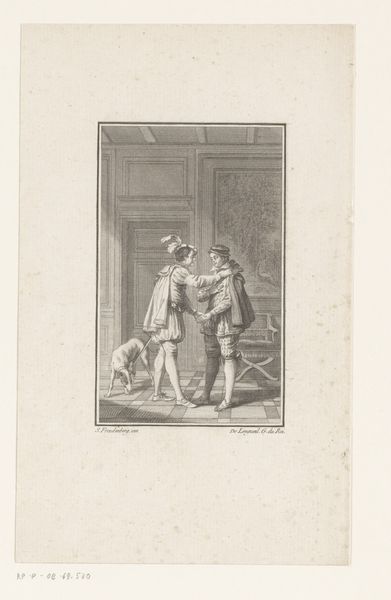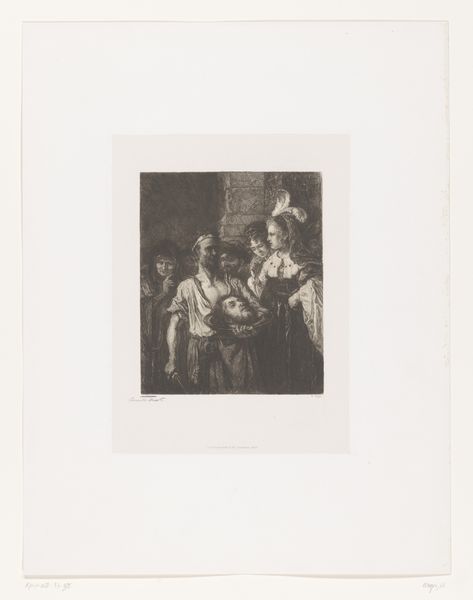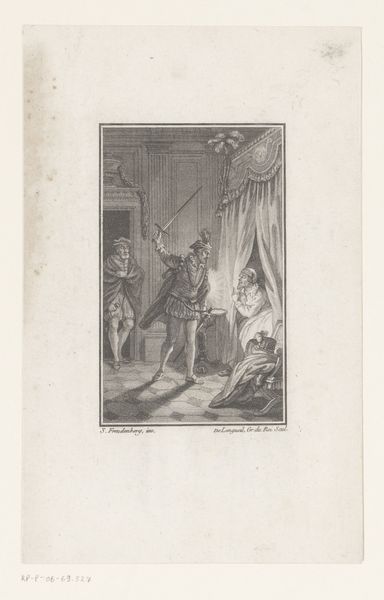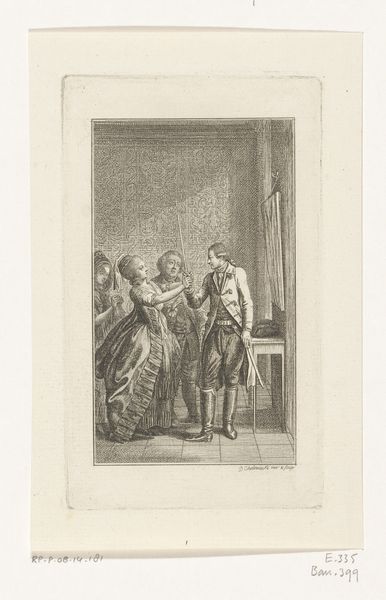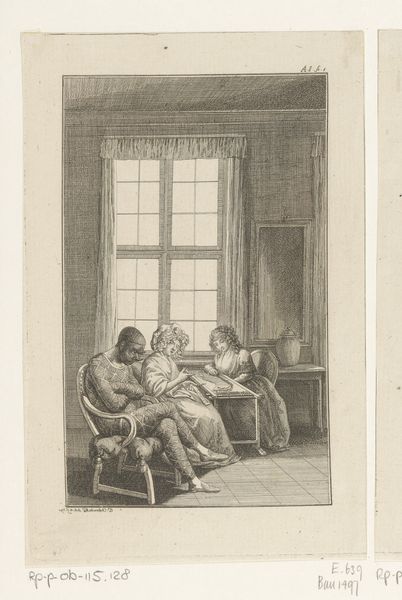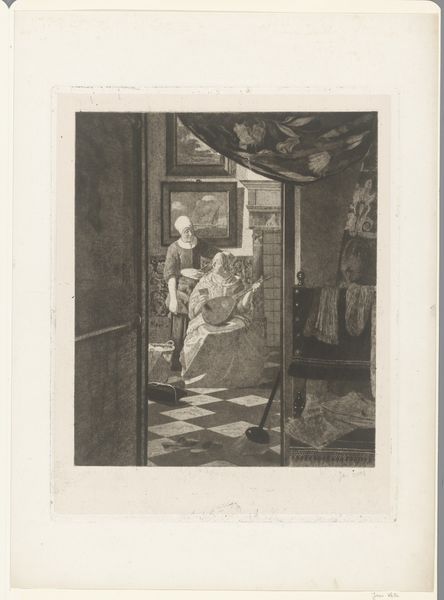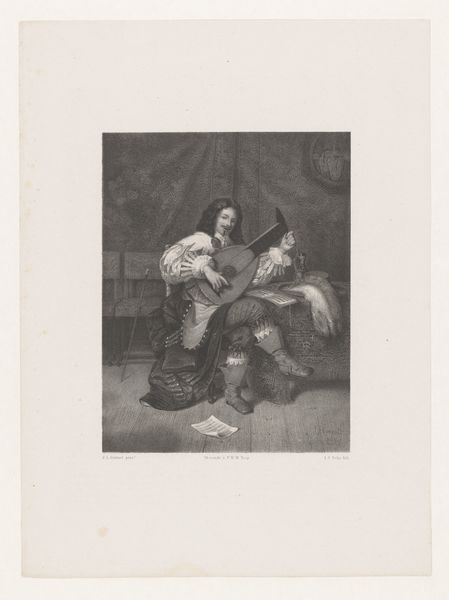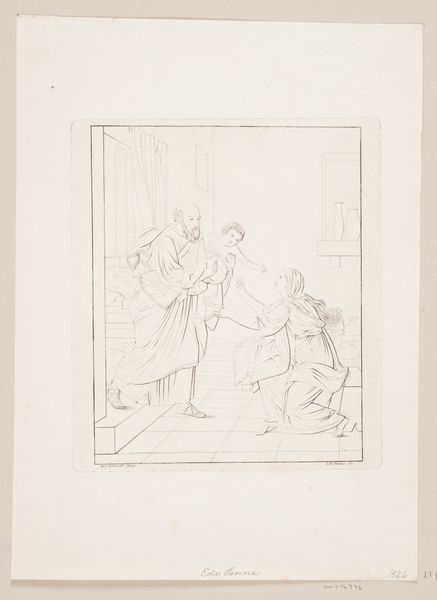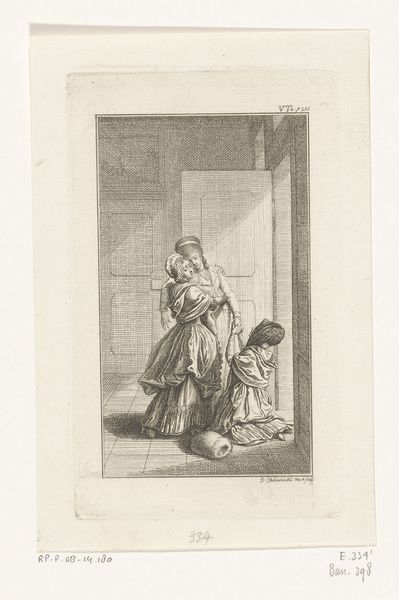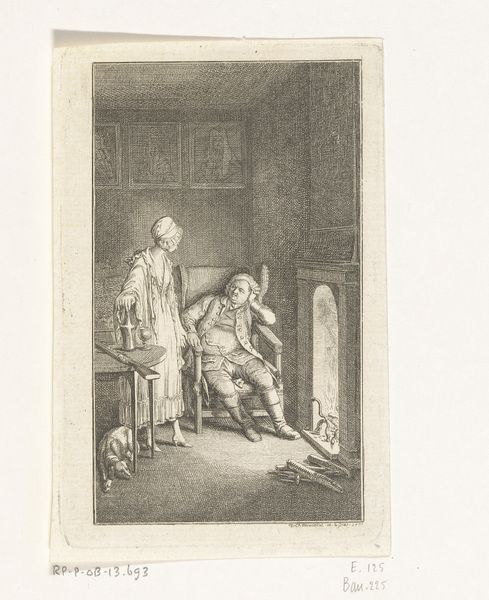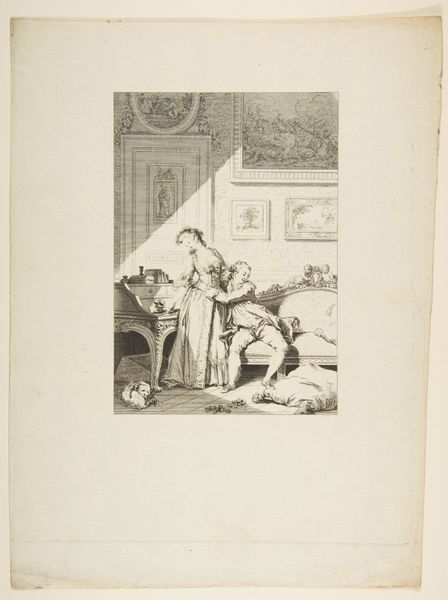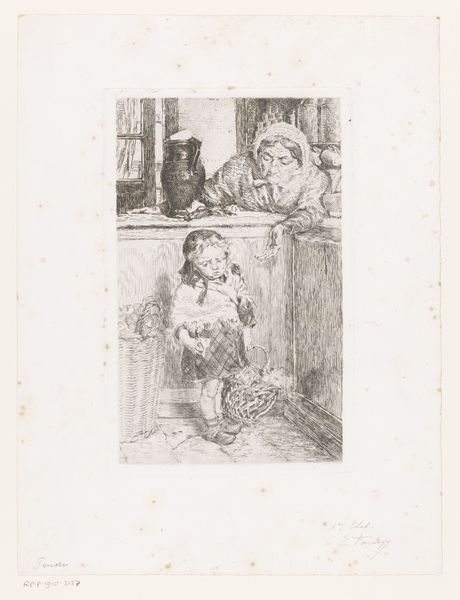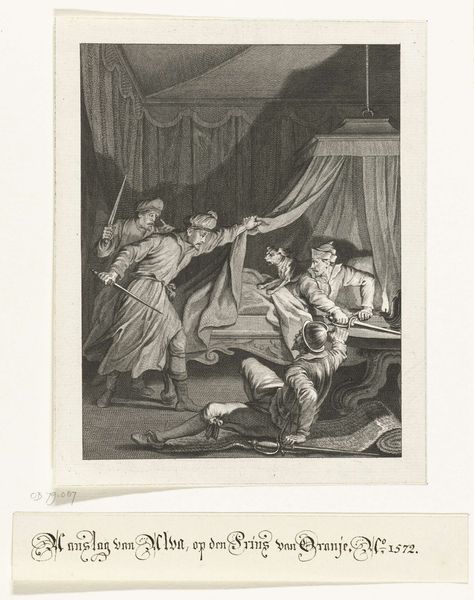
Amalie von Stolzenbach valt flauw als ze door haar geliefde Philip von Freudenthal wordt verrast 1781
0:00
0:00
Dimensions: height 178 mm, width 110 mm
Copyright: Rijks Museum: Open Domain
Curator: Here we have Daniel Nikolaus Chodowiecki’s 1781 engraving, titled “Amalie von Stolzenbach faints as she is surprised by her beloved Philip von Freudenthal," held here at the Rijksmuseum. My first impression? Editor: A potent emotional charge in a deceptively simple composition. The fainting woman as the fulcrum. The dark doorway—all set in that delicate engraving style. It evokes a strong feeling. Curator: Observe the sharp contrast, the impeccable lines, and the balanced placement of the figures within the rectangular frame. Chodowiecki uses linear perspective, to deepen the architectural space which plays an essential part in creating tension. Editor: And how fascinating that a swooning woman became such a powerful visual trope. Think of it. Throughout the 18th and 19th centuries, female hysteria and the faint were almost badges of sensitivity or tools for subtle manipulation within courtship rituals. What stories this image triggers. Curator: The artist plays with the semiotics of light and shadow—the man emerging from the darkness symbolizes passion and disruption—while the seated figure acts as a counterpoint, representing reason and order. Notice the seated lady whose calm composure is disrupted as if balance in society and in the family is in peril. Editor: Yes! This image resonates far beyond its apparent simple domestic scene. What cultural codes were in play when this was made, though? It becomes interesting to try to deconstruct its symbolism for audiences today. It challenges me to unravel and bring to life its cultural layers. Curator: The artwork itself becomes a cultural text. What I find most compelling is the way Chodowiecki masterfully deploys light and shadow and his skillful manipulation of compositional space to explore emotional tensions. The details become a network through which the overarching symbolic work comes to life, that, after all, must be at the essence of the reading. Editor: Yes, yes! I also appreciate how such visual storytelling is timeless—it enables audiences to experience and question historical narratives. We can dive into such symbols to enrich our contemporary vision too!
Comments
No comments
Be the first to comment and join the conversation on the ultimate creative platform.

